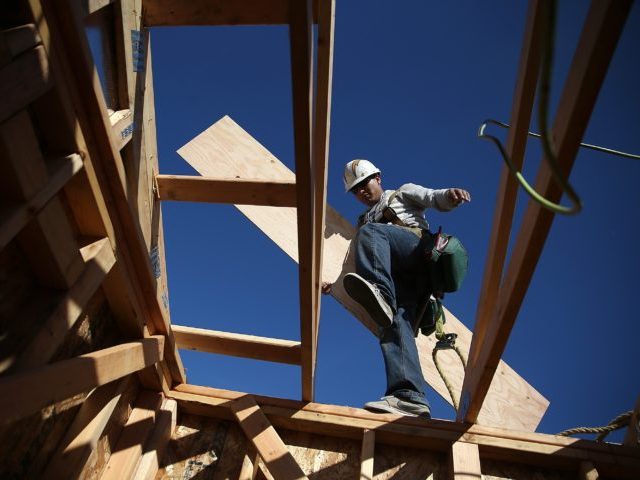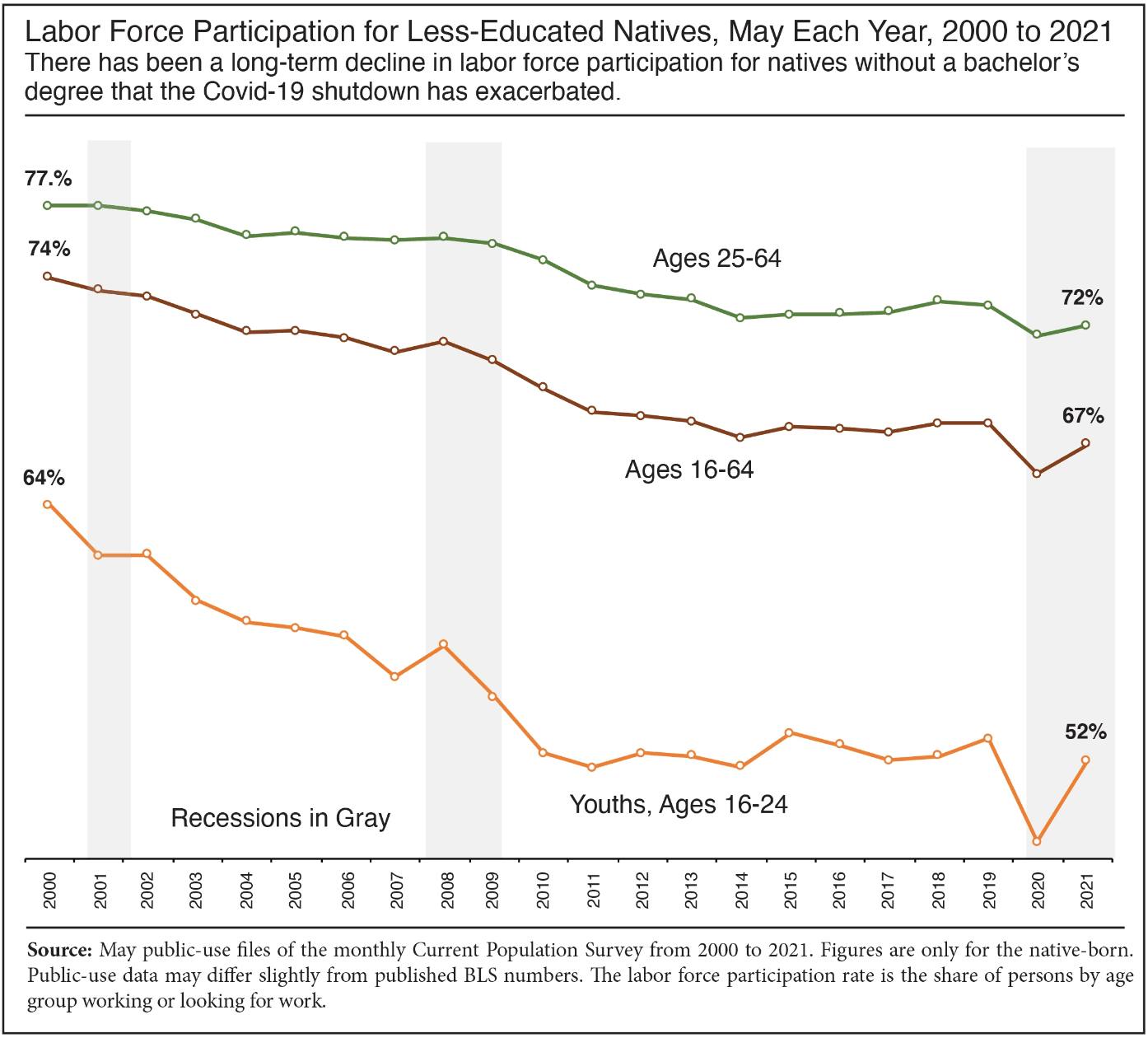Analysis: Amnesty for Illegal Aliens Makes Unemployment Crisis Worse

Giving amnesty to millions of illegal aliens, who would then enter the United States workforce to take jobs, would make the nation’s ongoing unemployment crisis worse, new analysis finds.
Analysis by Center for Immigration Studies Director of Research Steven Camarota shows that if Congress were to approve and President Joe Biden were to sign H.R. 6, the American Dream and Promise Act — which would provide at least 4.4 million illegal aliens with amnesty — it would drag down efforts to bring jobless Americans back into the workforce.
Camarota writes:
Allowing all illegal immigrants who came at younger ages or have TPS status to stay and giving them all legal status so they compete with legal immigrants and the native-born throughout the labor market will likely make it increasingly difficult to draw more Americans back into the labor market.
As Camarota notes, about 9.3 million Americans remain unemployed as of May — roughly 3.4 million more than those who were unemployed in May 2019. Likewise, more than 38 million Americans between 25 to 64-years-old were out of the labor force entirely last month, including three-fourths who do not have a college diploma.
The H.R. 6 amnesty would also cost American taxpayers about $35.3 billion over the course of only 10 years, according to the Congressional Budget Office (CBO). As Camarota mentions, this cost estimate does not include the net fiscal drain locally and at the state level for taxpayers.
Already, the U.S. admits about 1.2 million legal immigrants a year and awards them green cards to permanently resettle in the country. In addition, 1.4 million foreign nationals are given visas to work in the U.S. annually while hundreds of thousands of illegal aliens arrive at the southern border.
The CBO has repeatedly noted that mass immigration cuts Americans’ wages.
In 2013, CBO analysis stated that the “Gang of Eight” amnesty plan would “slightly” push down wages for the American workers. A 2020 CBO analysis stated that “immigration has exerted downward pressure on the wages of relatively low-skilled workers who are already in the country, regardless of their birthplace.”
John Binder is a reporter for Breitbart News. Email him at jbinder@breitbart.com. Follow him on Twitter here.
Report: Older Americans with Student Debt Fastest-Growing Demographic — Could Be Paying in Their 90s

Older Americans represent the fastest-growing demographic for student loan debt either from their own debt or that incurred on behalf of their children, data from the U.S. Department of Education shows.
Most of the discussion about student loans centers on recent college grads and debtors in their late 20s and into their early 30s, but Betsy Mayotte, president of the Institute of Student Loan Advisors, said that about 20 percent of those who still owe student loans are 50 and older, “and the fastest growing population of U.S. citizens carrying student loan debt are the over-65s.”
Marketplace reported on the surprising data:
One reason is that more people are going to college and graduate school, said Anqi Chen, an economist at the Center for Retirement Research at Boston College. “And then there’s also been an increase in parents taking on either co-signing or getting a parent PLUS loan for their kids,” Chen said.
People over 50 who are still carrying student debt also tend to struggle more than younger borrowers to pay it back, Mayotte said.
“We talk a lot about how, you know, it delays buying homes, it delays some people from getting married or having children,” but, Mayotte said, for older people who are still paying student loans, it can make it a lot harder to save for retirement — or to retire at all.
Financial Advisor magazine also reported on this new angle on the $1.7 trillion student loan debt in the United States:
There are now about 8.7 million Americans aged over 50 who are still paying off college loans, and their debt has increased by about half since 2017.
Some took out loans to help their children, and could be well into their 90s before they’re done repaying. Others went back to school later in life. In both cases, borrowers got saddled with hefty interest rates that inflated their balance.
That’s why the looming resumption of payments on student loans is a challenge that spans the generations. A pandemic moratorium is due to run out at the end of September, with no progress so far on the debt forgiveness that President Joe Biden promised during his election campaign.
“The interest accrued big-time,” Alma Topete, who is 60 and borrowed about $30,000. She owes $70,000 today, according to the Financial Advisor report.
“I never expected to have a loan at this age,” Topete said.
Frank Sizer Jr., 77, said he figures it will take two more decades to settle his debt. Sizer borrowed money to help his son study biology at Bridgewater College in Virginia. He retired in 2010, two years after his son graduated, and now owes about $52,000.
“God knows what the original amount was,” said Sizer, who has a $500 a month payment. “It just continued to grow.”
“Since mid-2006, federally backed loans under the Parent PLUS program have charged an average of 466 basis points above U.S. Treasury bonds, well above the typical rate for student borrowers,” Financial Advisor reported. “And loans to parents come with a hefty one-time origination fee too. The current going rate is 4.23 percent of the total amount borrowed—about four times what students are typically charged.”
Follow Penny Starr on Twitter or send news tips to pstarr@breitbart.com.

No comments:
Post a Comment